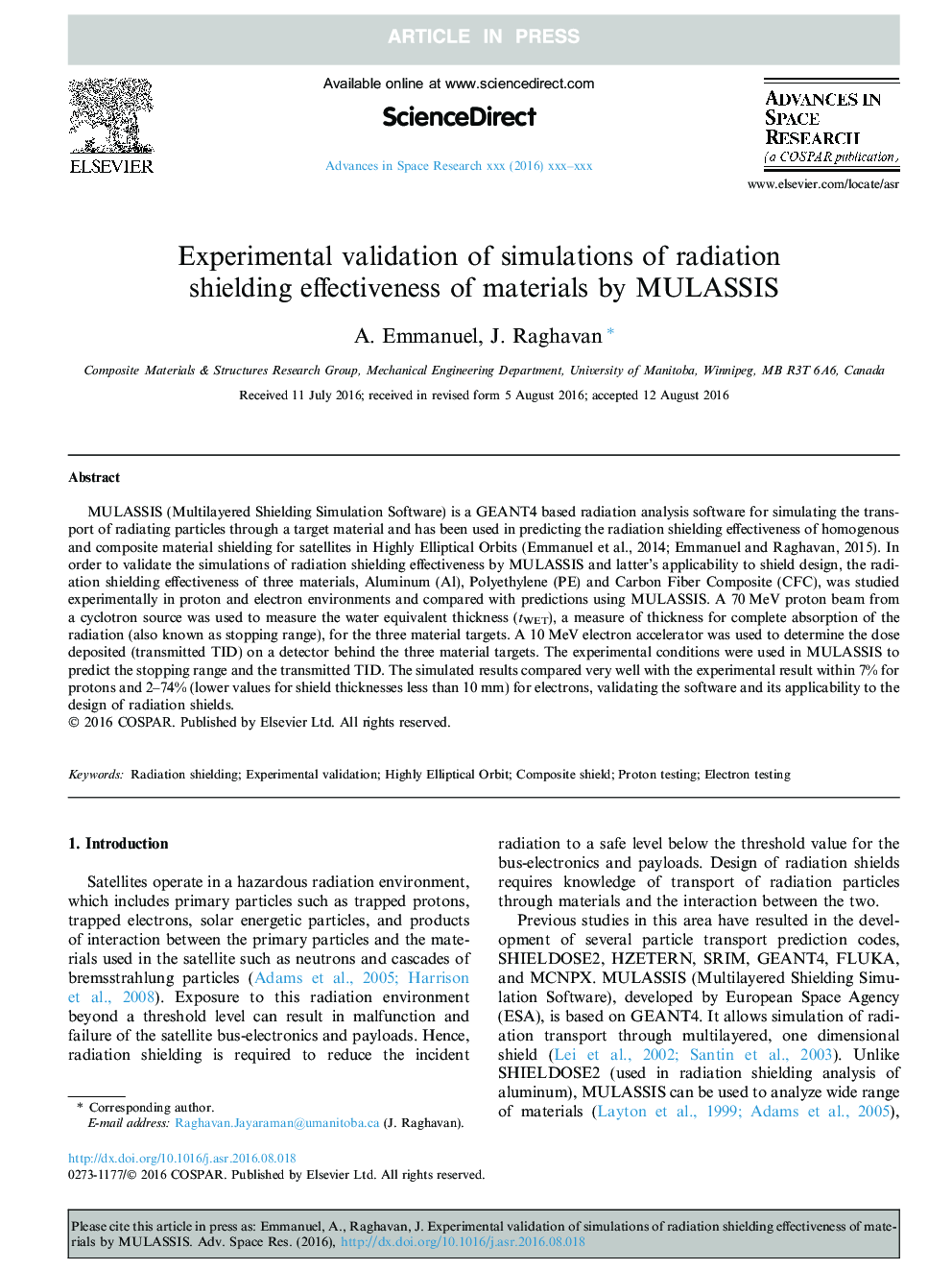| Article ID | Journal | Published Year | Pages | File Type |
|---|---|---|---|---|
| 5486811 | Advances in Space Research | 2016 | 9 Pages |
Abstract
MULASSIS (Multilayered Shielding Simulation Software) is a GEANT4 based radiation analysis software for simulating the transport of radiating particles through a target material and has been used in predicting the radiation shielding effectiveness of homogenous and composite material shielding for satellites in Highly Elliptical Orbits (Emmanuel et al., 2014; Emmanuel and Raghavan, 2015). In order to validate the simulations of radiation shielding effectiveness by MULASSIS and latter's applicability to shield design, the radiation shielding effectiveness of three materials, Aluminum (Al), Polyethylene (PE) and Carbon Fiber Composite (CFC), was studied experimentally in proton and electron environments and compared with predictions using MULASSIS. A 70Â MeV proton beam from a cyclotron source was used to measure the water equivalent thickness (tWET), a measure of thickness for complete absorption of the radiation (also known as stopping range), for the three material targets. A 10Â MeV electron accelerator was used to determine the dose deposited (transmitted TID) on a detector behind the three material targets. The experimental conditions were used in MULASSIS to predict the stopping range and the transmitted TID. The simulated results compared very well with the experimental result within 7% for protons and 2-74% (lower values for shield thicknesses less than 10Â mm) for electrons, validating the software and its applicability to the design of radiation shields.
Related Topics
Physical Sciences and Engineering
Earth and Planetary Sciences
Space and Planetary Science
Authors
A. Emmanuel, J. Raghavan,
